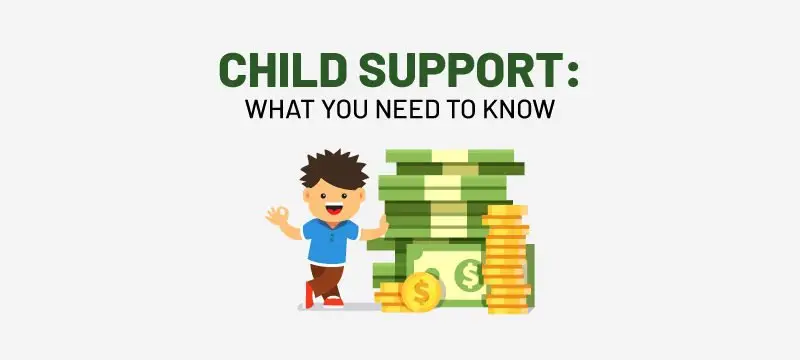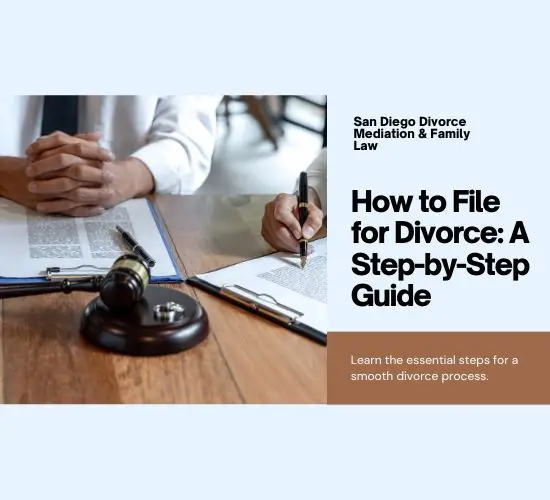Whether you’ve been married ten years or 25 hours, when your marriage ends, filing your taxes after divorce changes.
Divorce can profoundly change your life, as well as your taxes. From updating your filing status to understanding how to handle alimony and child support, it’s better to be prepared when it comes to your federal income taxes. Here are some things to know about filing taxes after divorce.
But while divorce ends your legal marriage, it doesn’t terminate your or your ex’s obligation to pay your fair share of federal income tax. If your divorce is final by Dec. 31 of the tax-filing year, the IRS will consider you unmarried for the entire year and you won’t be able to file a joint return.
When it comes to your taxes, there are some things you’ll need to consider when filing after divorce.
Choosing a New Filing Status
You can file as head of household as long as you meet three separate requirements. If you meet two of these requirements but fall short on one of them, you cannot use this filing status. The three requirements include:
- Need to have lived with a dependent for six or more months during the tax year.
- Unmarried before or on December 31 of the tax year, which can be the result of being legally separated, divorced or single (such as if you become widowed during that year).
- Paid over 50% of the total costs for maintaining your home during the tax year, which includes such expenses as utilities, food, real estate taxes, repairs, and home insurance.
In the event you qualify to file your taxes as head of household; MoneyCrashers does a great job of breaking down the potential tax benefits.
If you’re no longer married, you can’t file your federal income taxes with a status of “married filing jointly” or even “married filing separately.” You’ll need to choose between “single” or “head of household,” depending on how you qualify.
Filing as head of household has some big benefits compared to filing as single, including a higher standard deduction, eligibility for some valuable tax credits, and often a lower tax rate. But you can only file as head of household if …
- You’re not considered married as of Dec. 31 of the year for which you’re filing the tax return.
- You paid at least half the cost of keeping up a home during the year in which you’re filing.
- You have a “qualifying person” who either lived with you for at least half the year or who meets other specific requirements, including being temporarily absent for specific reasons. Some examples are children attending school, married children you claim as dependents, or qualifying parents you support and claim as dependents even if they don’t live with you.
After divorce, you and your ex can’t both file as head of household based on shared support and care for the same child or children. Children can count as qualifying persons only for the custodial parent, the parent that the child lives with for most of the year. If both parents share the child for an equal amount of time, the parent whose adjusted gross income is higher can claim the child for the purposes of filing as head of household. Keep in mind, divorce decrees typically establish who is the custodial parent.
The noncustodial parent (the parent that the child lives with for a shorter amount of time) can’t use the child to claim head-of-household status. Even if the custodial parent releases the right to claim the child by signing IRS Form 8332 (which allows the noncustodial parent to claim the child as a dependent), there’s no exception for head-of-household status.
Deciding Who Claims Dependent Children
Speaking of claiming children as dependents — only one parent gets to do that when filing taxes after divorce. Typically, the parent who gets the deduction is the custodial parent. But as we mentioned, an exception can be made using Form 8332, which is signed by the custodial parent (releasing that parent’s claim) and filed with the noncustodial parent’s taxes.
You may be wondering why the claim matters, since the Tax Cuts and Jobs Act signed into law in 2017 suspended the dependency exemption. Before the Tax Cuts and Jobs Act, taxpayers could deduct up to $4,050 from taxable income for each dependent. That deduction will not be available again until Jan. 1, 2026.
But it still benefits a custodial parent to claim a child as a dependent both to get head-of-household status and to become eligible for certain tax credits and other deductions, such as …
- The child tax credit, which is $2,000 per qualifying child
- A tax credit for child care and dependent care expenses
- The earned income tax credit
- The American opportunity tax credit for qualified education expenses
Because a noncustodial parent won’t be able to claim head-of-household status if gaining the right to claim a child as a dependent, and with tax reform eliminating the dependent deduction, there’s not much incentive to negotiate the arrangement. To claim the tax credits that remain, you’d need to actually be the custodial parent and claim your child as a dependent.
Many assume that if you’re paying child support, you can count this as a deduction. And some think that child support payments count as income. Neither is true. Child support is not tax-deductible or taxable in any state or circumstance.
The tax-related factor that does matter is which parent each child lives with for more than half the time during the year. This parent is considered the custodial parent on a tax return. The custodial parent can claim their child as a dependent when filing taxes. This option isn’t available to the non-custodial parent. The earned income credit and child care credit can also be claimed by the custodial parent.
Reporting Alimony and Child Support
As part of your divorce decree, you may agree to pay your ex-spouse alimony. Or you may be required to pay child support. Whenever money changes hands in either situation, it’s important to understand the potential impact on your taxes.
You can deduct alimony you’ve paid from your taxable income. If you receive alimony as part of a divorce agreement, you’ll need to report it as income for the year.
As for child support, it’s never been tax deductible and wasn’t ever considered income for tax purposes. Tax reform didn’t change that.
When you’re filing taxes after divorce, keep in mind that alimony taxes may apply to your situation. The rules changed between 2018 and 2019. As of January 1, 2019, alimony or separate divorce- or separation-related maintenance payments are no longer tax-deductible by the payer. Also, the payee (spouse receiving the alimony) is not required to report alimony payments as income.
If your divorce was finalized before January 1, 2019, you may need to adhere to previous IRS rules – which could mean a deduction for the payer and impact income for the payee.
Are there any tax breaks if I’m divorced?
You may be wondering if any tax breaks are available to ease your financial burdens. In general, there aren’t any specific tax breaks that can be claimed after a divorce is finalized. However, there are a couple of filing options that may help you save some money on your annual tax return.
As mentioned previously, filing as head of household can reduce the amount you owe for the given year. It’s also possible that you will benefit from selling your home as part of the divorce. If neither you nor your ex-spouse wants to continue living in the home, you can avoid being taxed on the initial $250,000 you obtain from the sale as long as the home was owned by you for at least two out of the previous five years.
Seeking a divorce is never easy. If you’ve been filing jointly for years, having to file a separate return can be stressful because of how different these returns can be.
There’s no good way to calculate the emotional costs of ending a marriage, but you can take steps to ensure that filing taxes after divorce goes as smoothly as possible. Notify the IRS of your new filing status, make sure you and your ex are clear on who gets to claim children as dependents, and plan for any capital gains you may realize on the sale of a home.
Begin the low-stress process with Scott F. Levin, Esq, at San Diego Divorce Mediation. You’ll have access to flexible options, including virtual meetings. Reach out today to schedule a consultation and see the difference mediation can make.










